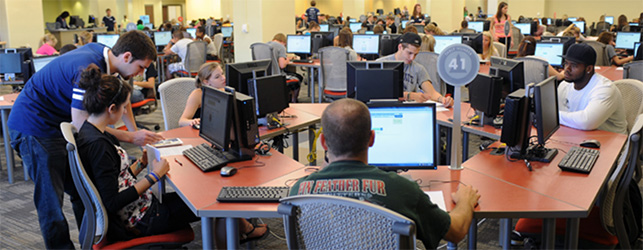Details
In 1997, Virginia Tech dramatically changed how they taught lower division mathematics courses. They abandoned lectures and created a 500 seat “Mathematics Emporium” computer lab where students learned calculus and linear algebra assisted by software together with individualized input from teams of graduate students. Success rates soared and instructional costs plummeted. Other institutions soon adapted this model to their own needs with similar success. Emporiums, large and small, sprouted all over the country. They became popular for teaching remedial mathematics, often in highly modularized formats. A commonly reported outcome was a 25% increase in student success rates along with a 25% reduction in instructional costs. Most Emporiums were instructor-centered, driven by MyMathLab software, with students progressing through the curriculum lock step as a cohort. At Kent State we took a different, more student-centered approach. In 2010, we created a 250 seat Emporium driven by adaptive, “artificially intelligent” ALEKS software. This builds and constantly updates an accurate representation of each student’s “knowledge space.” It allows students to choose individualized pathways through the curriculum and to advance efficiently, focusing their efforts primarily on learning what they don’t already know. We’ll discuss how and why we set up our ALEKS Emporium, describe a variety of positive outcomes, outline a recent radical metamorphosis, and situate everything within an emerging national agenda.
